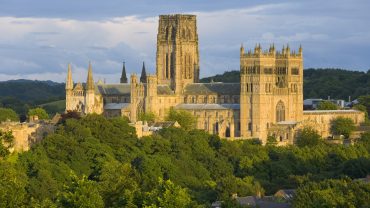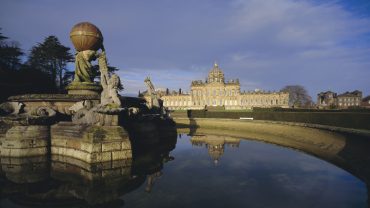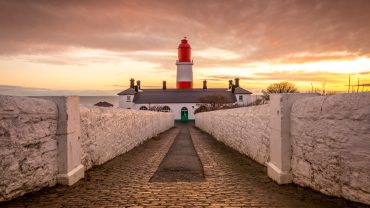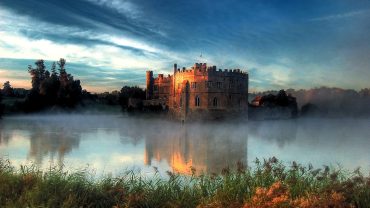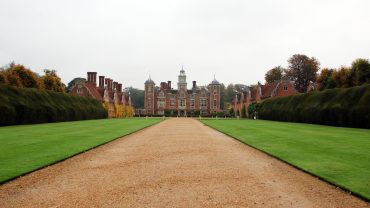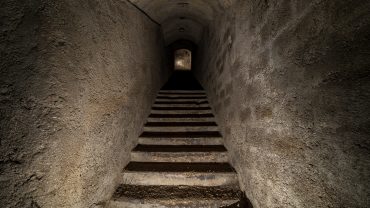Often called the ‘county of spires and squires’, Northamptonshire captures the essence of rural England with its rolling countryside, ancient woodlands and picturesque market towns. But beyond its quiet villages and meandering lanes lies an extraordinary collection of historic houses and grand estates. They’re not just the most remarkable stately homes in Northamptonshire, they’re some of the most impressive in the whole country.
From Elizabethan showpieces to Georgian splendour, Northamptonshire has long been a county of influence and ambition. Many of its great houses are still lived in and lovingly cared for by the very families who built them, creating a rare sense of continuity. The walls of Northamptonshire’s historic houses have witnessed political machinations, royal intrigue and centuries of family tradition, leaving behind a legacy of elegance and character, and more than a few interesting stories!
Today, Northamptonshire offers visitors an irresistible mix of sweeping parklands, striking architecture and interiors brimming with treasures. Famous as the home of England’s boot and shoe industry, let’s ‘cobble’ together some info on the most famous stately homes to visit in Northamptonshire!
Castle Ashby
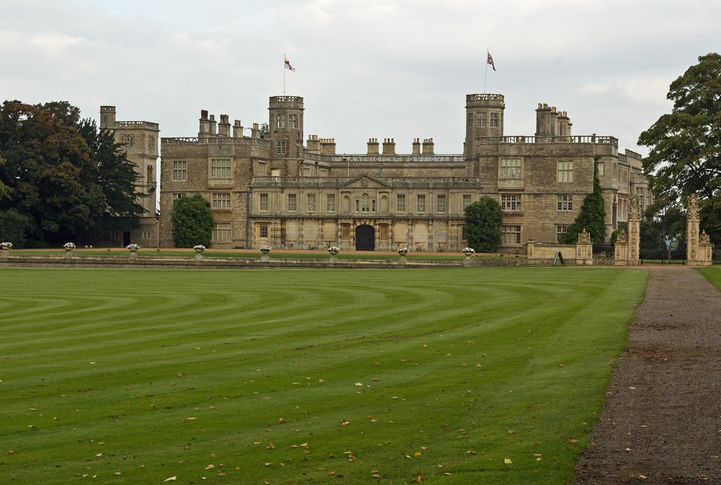
Castle Ashby, ostentatious Elizabethan grandeur at its finest (Credit: Carsthets via Getty Images)
Castle Ashby House, in the village and civil parish of Castle Ashby in the west of the county, is a stunning example of an Elizabethan prodigy house (a house of staggeringly ostentatious grandeur designed to attract and impress the monarch with their size and luxury), with a rich history dating back to the 1500s. The original manor house on the site dates to the early 1300s, and the estate was bought in 1512 by William Compton, but the house as it stands today began taking shape in 1574 when Henry Compton, 1st Baron Compton, started rebuilding the medieval castle into a grand family seat.
One of the most visually stunning stately homes in Northamptonshire, Castle Ashby has a rich royal heritage, playing host to numerous royal visitors including Elizabeth I and King James I, with records from 1605 showing an impressive household of eighty-three servants, four chaplains, three musicians and a man impressively titled the Gardener of Ashby.
During the Civil War, the Compton family sided with the King, and the house suffered fire damage that can still be seen today on the window lintels. Later, King William III inspired the planting of grand tree-lined avenues stretching across the grounds, creating one of Northamptonshire’s most iconic landscapes. Today, Castle Ashby remains in the hands of the Marquess of Northampton’s family, and is said by some to have been the inspiration for Mansfield Park, the house in Jane Austen’s eponymous novel.
Holdenby House
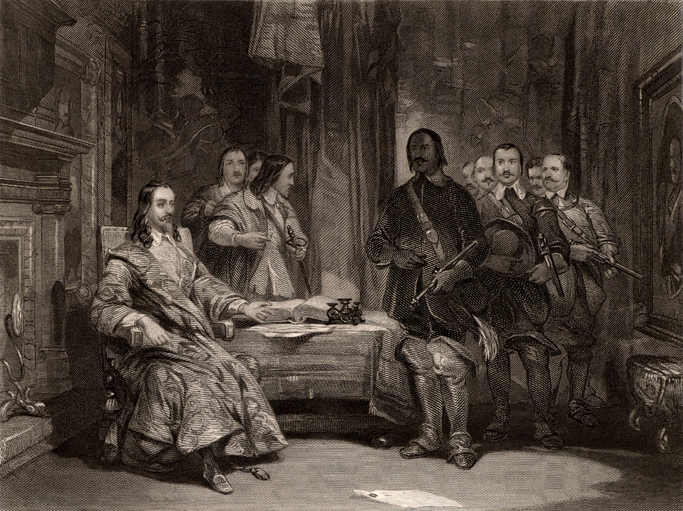
King Charles I was a prisoner at Holdenby in 1647 (Credit: Photos.com via Getty Images)
Often pronounced, and sometimes spelled Holmby’, the Grade II* listed Holdenby House lies six miles north-west of Northampton and is a fascinating blend of stately grandeur and historical intrigue.
It was completed in 1583 by Sir Christopher Hatton, Lord Chancellor to Queen Elizabeth I, and was one of the largest, most expensive and most magnificent prodigy houses of its time. The house was designed to entertain Queen Elizabeth I herself – so much so that Hatton refused to spend a night there until she did. Its Renaissance-style architecture, with symmetrical facades and mullioned windows, saw it rival other great Tudor houses such as Audley End in Essex and Theobalds House in Hertfordshire, and it remains one of the most popular historic houses to visit in Northamptonshire.
Holdenby’s royal connections continued when King James I bought it in 1607, intending it for his son Charles, Duke of York who later became king. After the Civil War, Charles I was imprisoned at Holdenby for around four months in 1647, but instead of being held captive in a dank cell, he lived in comfortable conditions with numerous servants and enjoyed walks in the gardens. Though much of the original palace was demolished in the seventeenth century, a smaller Victorian house was built on the site. The estate eventually passed to the family of the Lowthers, who still own it today, continuing a remarkable lineage of ownership stretching back over 400 years.
Althorp House
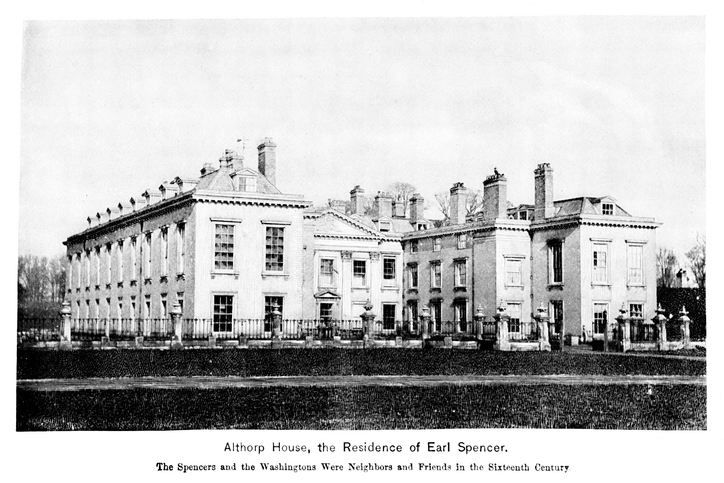
Althorp has been in the Spencer family for over 500 years (Credit: Christine_Kohler via Getty Images)
Althorp House, between the villages of Great Brington and Harlestone, has been the grand family seat of the Spencer family for over 500 years, making it not only one of the most historically significant stately homes in Northamptonshire, but one of England’s most enduring aristocratic homes. The estate was bought in 1508 by Sir John Spencer with wealth built from farming, and over the years it blossomed into a magnificent country house. The current house dates mainly from 1688 and has welcomed kings from Charles I to Edward VII through its majestic halls. Known for its beautiful classical architecture and impressive art collection, Althorp has long been a social hub, hosting lavish parties, literary festivals and gatherings of Britain’s high society.
Perhaps most famously, Althorp is the childhood home of Diana, Princess of Wales, making it one of the most popular historic houses to visit in Northamptonshire. Her legacy lives on at the estate, where she is laid to rest on an island in the middle of the Round Oval lake. The house also boasts a vast private library and treasures amassed over generations, from priceless portraits to fine porcelain. Today, Althorp remains in the hands of Diana’s brother Charles Spencer, 9th Earl Spencer, continuing a remarkable lineage of stewardship.
Rockingham Castle
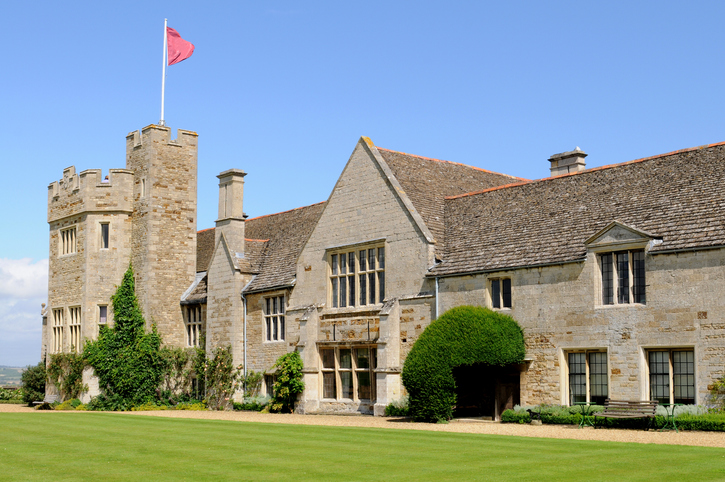
Rockingham Castle was built by William the Conqueror (Credit: grahamheywood via Getty Images)
One of the oldest of all the historic houses in Northamptonshire, Rockingham Castle boasts over 900 years of history, beginning as a wooden motte-and-bailey fortress built by William the Conqueror in the late eleventh century. Later modifications were added by William II who replaced it with a stone castle, and Henry III who added the iconic gatehouse.
Perched on a ridge overlooking the Welland Valley, it served as a royal hunting lodge and administrative centre for centuries, but by the late fifteenth century it had fallen into disrepair. In 1544, Sir Edward Watson leased Rockingham from King Henry VIII (it was bought by Sir Lewis Watson in 1619 from King James I) and over the years the Watson family transformed the medieval fortress into a comfortable residence while preserving its defensive charm. They have owned and lived in the castle ever since.
During the English Civil War, what was already one of the most historically important stately homes in Northamptonshire was a Royalist stronghold but was captured by Parliamentarian forces in 1643. Despite damage, it survived intact, unlike many castles of its time. In the nineteenth century, restorations included the addition of the flag tower, and the castle became a favourite of Charles Dickens, who’s said to have drawn inspiration from it for his novel Bleak House.
Kirby Hall
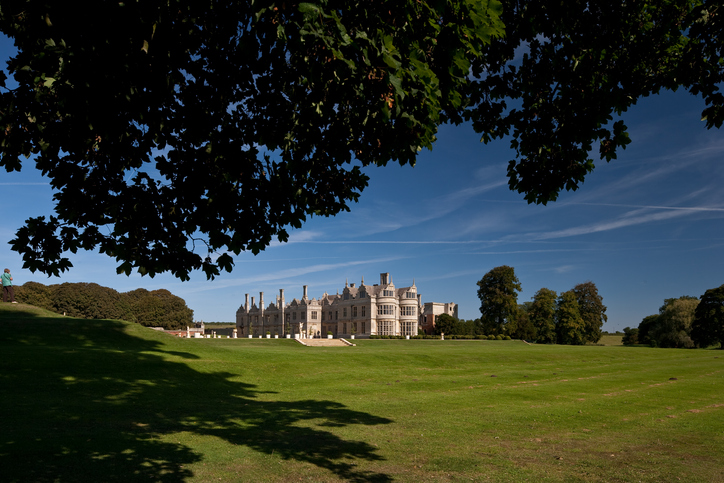
Kirby Hall was inspired by the Renaissance houses in France (Credit: GTMedia via Getty Images)
Kirby Hall, located near the village of Gretton, is a magnificent Elizabethan country house brimming with history and architectural splendour. Construction began in 1570 for Sir Humphrey Stafford, inspired by French Renaissance design, but he died before it was completed. The house was then bought by Sir Christopher Hatton, Queen Elizabeth I’s Lord Chancellor (and owner of Holdenby House mentioned above) who expanded it and transformed it into one of England’s most staggeringly lavish prodigy houses. Although parts of Kirby Hall are now roofless ruins, the Great Hall and state rooms remain, evoking the grandeur of its heyday.
One of the most popular stately homes to visit in Northamptonshire, Kirby Hall played host to Anne of Denmark, the wife of King James I, in 1605, and in the mid-eighteenth century, the house came under the ownership of the Finch-Hattons.
By the late 1880s, Kirby Hall was abandoned and falling into ruin, but it’s now preserved by English Heritage and remains a romantic testament to Elizabethan innovation and style.
Lyveden New Bield
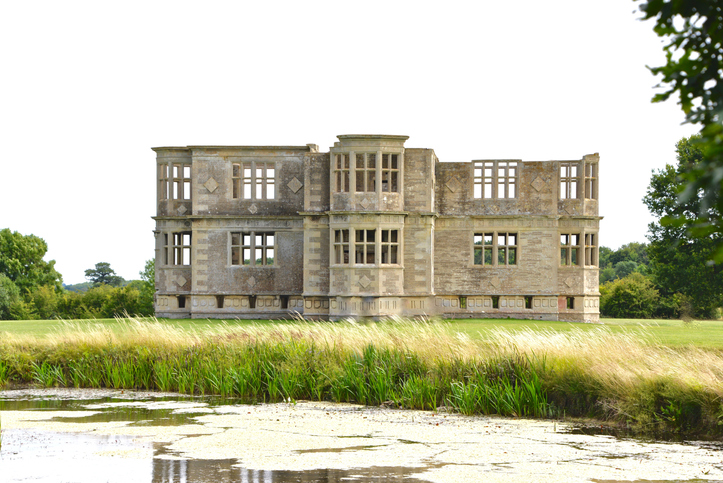
Lyveden may have been an infamous 'secret house' (Credit: Wirestock via Getty Images)
Lyveden New Bield is an astonishing survivor of the Elizabethan age and perhaps the most fascinating of all the historic houses to visit in Northamptonshire, even though it’s unfinished. Near the village of Aldwincle in the northern part of the county, Lyveden is an extraordinary Elizabethan summerhouse. Built around 1604–05 by Sir Thomas Tresham, a devout Catholic, it was meant to be a place of spiritual reflection within his grand garden. The building’s layout is based on the shape of a Greek cross, symbolising Tresham’s deep religious faith, further emphasised by the many Catholic friezes and iconography decorating its exterior. Sadly, Tresham died in 1605, leaving the house incomplete and roofless, and it remains exactly as it was when the last stone mason left more than four centuries ago.
Lyveden was intended for use as a house, given it included a great hall, parlour, kitchen and buttery on the lower floors, and a bedroom upstairs, but it’s been suggested that it could have been used as what was known in the sixteenth and seventeenth centuries as a ‘secret house’. These were often private retreats, away from an estate’s main mansion, where the owner could escape to.
In Sir Thomas’s case, the discreet location and spiritual symbolism suggests it was designed as a peaceful getaway from the political and religious unrest of the time. Sir Thomas faced persecution for his Catholic beliefs under Protestant rule, so this hidden sanctuary may have offered a private place for devotion and contemplation, visible only to those who understood its coded religious messages and meaning. Today, the National Trust looks after Lyveden, preserving its delicate mix of mystery, history, and tranquil beauty.
Cottesbrooke Hall
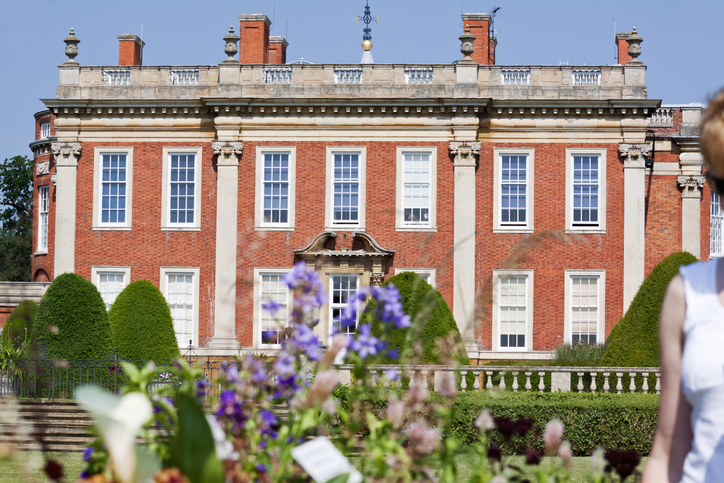
Cottesbrooke Hall may have been the inspiration for Mansfield Park (Credit: stocknshares via Getty Images)
Adjacent to the village of the same name, Cottesbrooke is an almost-perfect example of Queen Anne architecture. The estate was bought in the 1630s by Sir John Langham, 1st Baronet of Cottesbrooke, and the house was built between 1702 and 1712-13 by the 4th Baronet, Sir James Langham.
This exquisitely elegant red-brick country house features beautiful ashlar stone detailing, a symmetrical seven-window façade, and expansive formal gardens. The estate has been shaped by several prominent architects over the centuries, including Francis Smith of Warwick and later Robert Mitchell, who added extensions and refined its grand entertaining spaces. The house is set within thirteen acres of award-winning gardens designed by Robert Weir Schultz which include tranquil woodland walks, rose borders, and a formal parterre, and it’s one of the most peaceful and picturesque stately homes to visit in Northamptonshire.
The Langham family owned the estate until 1911, when it was sold to Captain Robert Bingham Brassey, and later to the Macdonald-Buchanan family in 1937 who still live there. The estate’s rich history includes literary connections, as Cottesbrooke Hall – like Castle Ashby above – is believed by some to have inspired Jane Austen’s Mansfield Park. Today, it remains a much-loved family home, treasured for its fine furniture, famous sporting art collection, and beautifully maintained grounds.
Delapré Abbey
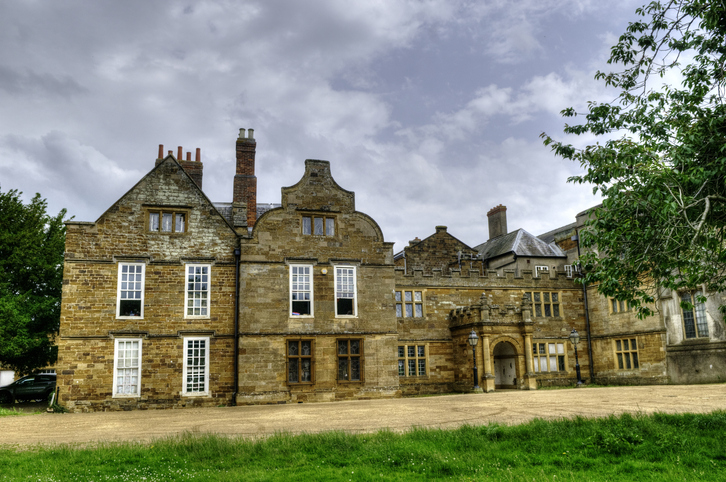
Delapré Abbey has a history spanning more than 900 years (Credit: wzfs1s via Getty Images)
Delapré Abbey, located just outside the centre of Northampton, boasts a rich history spanning nearly 900 years. Founded in 1145 as the Abbey of St Mary de la Pré by an Anglo-Norman earl called Simon de Senlis, the 2nd Earl of Northampton, it began as a Cluniac nunnery attached to the Abbey of Cluny in the French region of Burgundy. Since then, it has played a significant role in English history, notably as the overnight resting place of Queen Eleanor of Castile’s body in 1290 en route to London.
Delapré also witnessed the pivotal Battle of Northampton in 1460 during the Wars of the Roses, after which King Henry VI prayed there before being taken prisoner to London. The Dissolution of the Monasteries under Henry VIII in 1538 ended nearly 400 years of religious life at Delapré, after which it became a private country house and estate, passing through dozens of owners until 2018 when it came under the management of the Delapré Abbey Preservation Trust.
Architecturally, the Abbey is a fascinating blend of Elizabethan, Jacobean, and Palladian styles. It features a striking eighteenth-century symmetrical south front, classical Tuscan columned porch, and ornate interiors including a Gothic fireplace and nineteenth-century decorative finishes. Having narrowly escaped demolition in the mid-twentieth century, it was restored through community efforts and lottery funding. Today, Delapré Abbey is a vibrant heritage site and one of the most fascinating historic houses to visit in Northamptonshire, offering visitors immersive storytelling about its past, surrounded by beautiful gardens and parkland.


